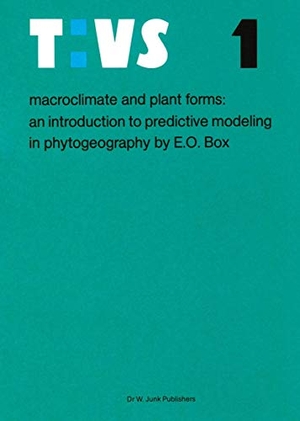Für statistische Zwecke und um bestmögliche Funktionalität zu bieten, speichert diese Website Cookies auf Ihrem Gerät. Das Speichern von Cookies kann in den Browser-Einstellungen deaktiviert werden. Wenn Sie die Website weiter nutzen, stimmen Sie der Verwendung von Cookies zu.
Cookie akzeptieren
Elgene E. O. Box
Macroclimate and Plant Forms
- Springer Netherlands
- 2011
- Taschenbuch
- 276 Seiten
- ISBN 9789400986824
This study arose out ofthe old question of what actually determines vegetation structure and distributions. Is climate the overriding control, as one would suppose from reading the more geographically oriented literature? Or is climate only incidental, as suggested by more site and/ or taxon-oriented writers? The question might be phrased more realistically: How much does climate control vegetation processes, structures, and distributions? It seemed to me, as an ambitious doctoral student, that one way to attempt an answer might be to try to predict world vegetation from climate alone and then compare the predicted results with actual vegetation patterns. If climatic data were sufficient to reproduce
Mehr
Weniger
zzgl. Versand
in Kürze